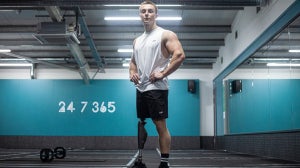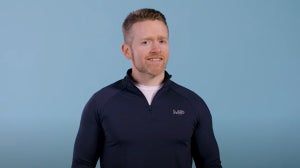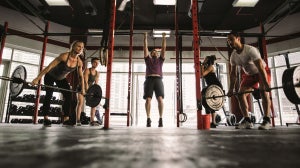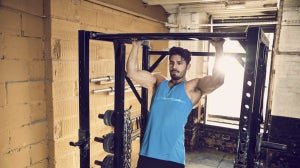
Written by Jack Boardman
5 Different Squats
Think there’s no variety in squats? You’re wrong; there’s more to squatting than the standard movement with the bar across the back of your shoulders. If you’re looking for a few different exercises to try, these are a good place to start.
#1 Standard Squat
The standard or basic squat is a compound lift that is designed to develop the muscles of the thighs, hips and buttocks, quadriceps femoris muscle (vastus lateralis, vastus medialis, vastus intermedius and rectus femoris) and hamstrings.
For the basic squat you should have your feet approximately shoulder-width apart, your hips back, shoulders and chest up straight and, for a standard squat, keep your feet flat on the floor. Widening your stance will engage more muscles and hone in on the glutes, allowing more power for increasing the amount you lift, and minimising any issues with knee and lower back pain.
#2 One Leg Squat
A one-legged squat isn’t so much about powerlifting as it is about working your core strength so don’t be a hero when first having a go at these, and attempt them in the first instance without any weight at all – you might be surprised how bad you are at balancing if you’ve not been practicing.
Build this up over time with the help of a bench or stacked boxes behind you. With one leg outstretched in front of you, channel the quads of your standing leg along with your core and lower yourself until the leg is bent at a right angle.
We advise you hold a kettlebell or dumbbell in front of you when developing your technique.

#3 Front Squat
There are no cutting corners when it comes to front squats. That may not be a great selling point if you’re after easy gains from easy lifts, but then if you’re cheating by performing any lifts with poor technique, you’re probably not benefiting. Front squats develop overall leg muscle strength and balance, with emphasis on your core and upper back strength.
With the bar balanced across your shoulders at the front (instead of your back as with traditional squats), you will channel your quads, though as your upper back will also bear the brunt you’ll be lifting considerably less while engaging your core more than with standard squats.
#4 Hack Squat
The hack squat is seen by many as more of a deadlift than a squat because you’re lifting the weight from the floor. The difference is the bar is on your heels and you won’t be able to manage the same weight you can with the sheer upward thrust of a deadlift. It focuses more on the quads because, with the bar behind you, you don’t have the option to lean forward – in this way it’s more like a squat (or at least develops the muscles you’re aiming for with a squat). It builds your core strength and balance, while obviously straining the shoulders.

#5 Overhead Squat
Overhead squats build overall strength while allowing the most mobility of the squats. Press or perform a snatch to raise the bar above your head with out-stretched arms. Balance and core work is as big a focus as your quads and arms with this one.
This is a squat you’ll need to develop over time. Choose a weight that you can comfortably hold above your head or squatting won’t be an option. Because of your upright torso and outstretched arms, you won’t be able to cheat and avoid using your quads and hamstrings – otherwise, with the bar forward you would bend and take the weight on your lower back.
Our articles should be used for informational and educational purposes only and are not intended to be taken as medical advice. If you're concerned, consult a health professional before taking dietary supplements or introducing any major changes to your diet.

Grant is a sports nutritionist and certified strength coach. He has multiple postgraduate diplomas in nutrition and strength coaching as well as a Master’s degree in Sports and Exercise Nutrition, with a specific focus on protein. Grant has worked in the fitness industry for well over a decade and has helped coach professional athletes and sports teams, as well as the average gym-goer looking to get in the best shape possible. He now spends most of his working time teaching fitness professionals and coaching people remotely.
He’s a big believer in practising what he preaches and has been involved in resistance training and martial arts for over 20 years. In his spare time, Grant enjoys being with his wife and daughter as well as the family dogs and catching up on the latest Netflix series.
Find out more about Grant’s experience here and about his personal training here.







